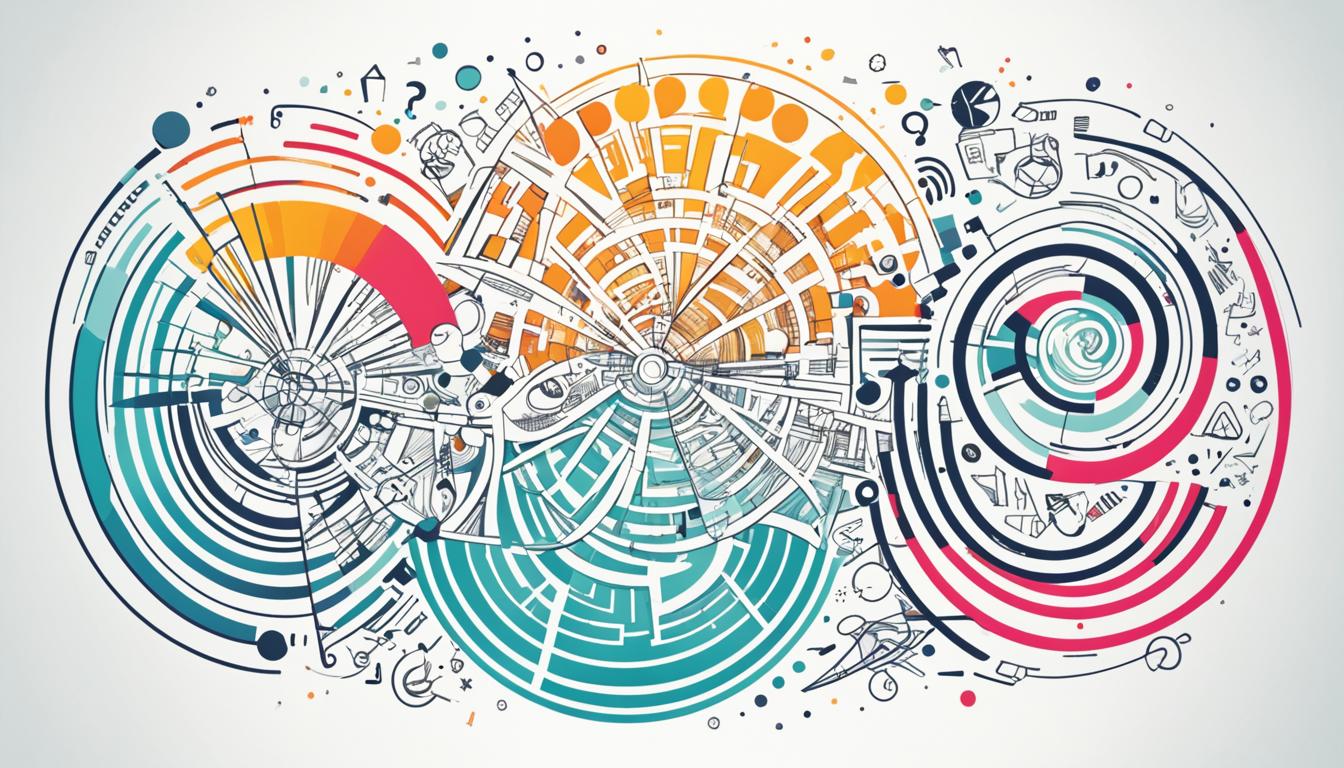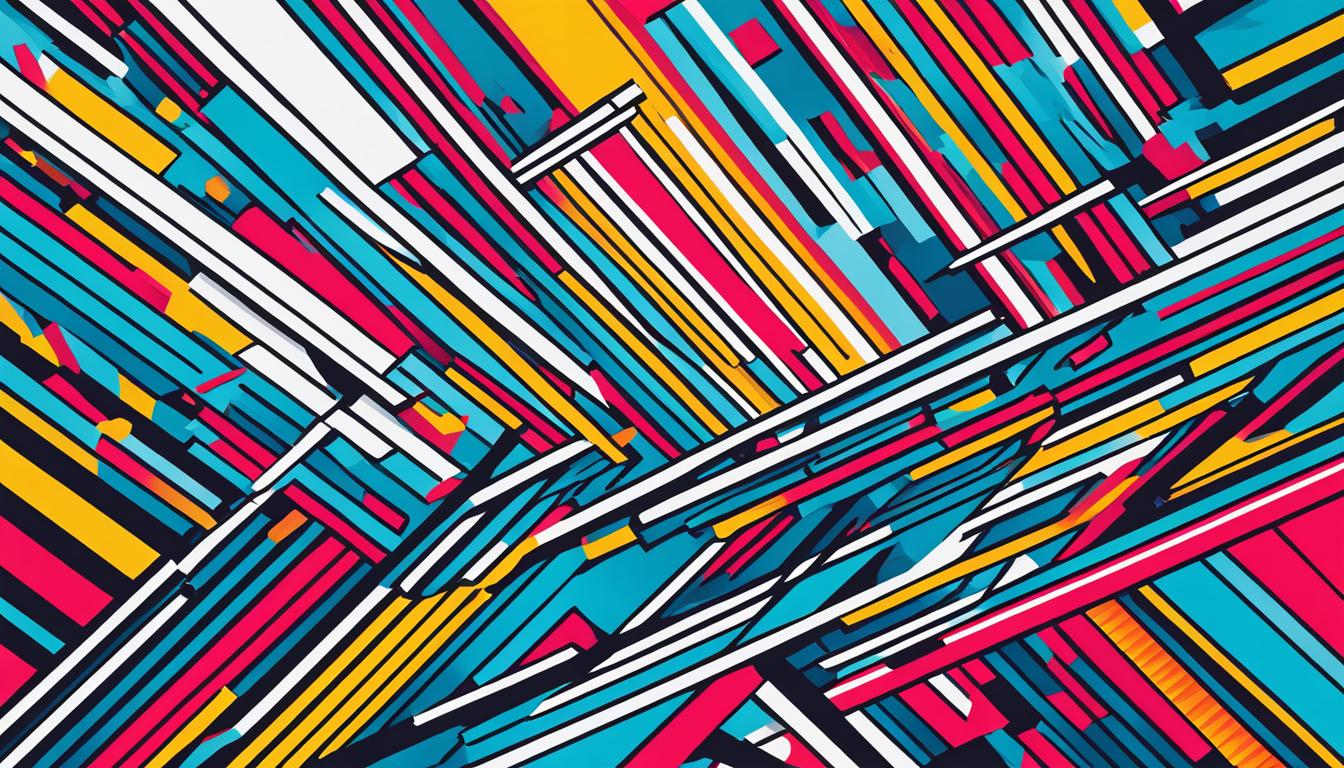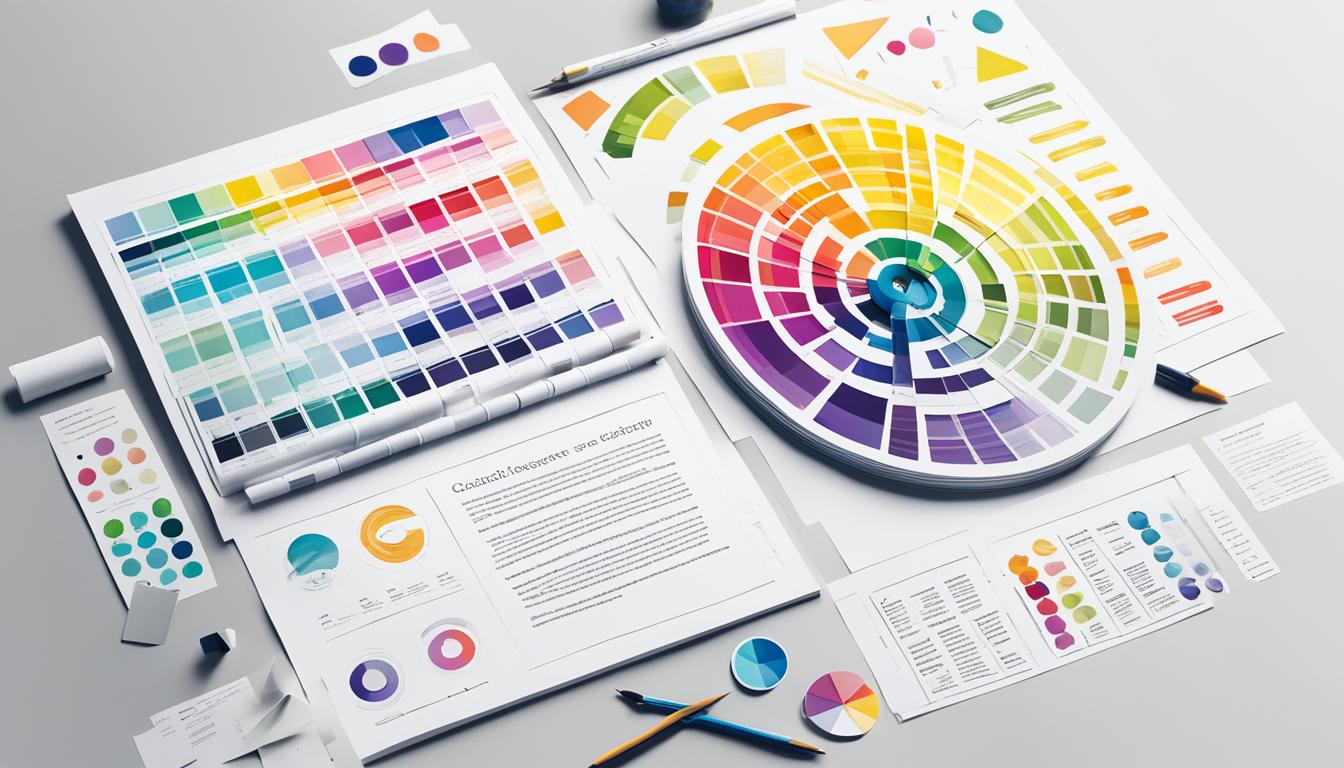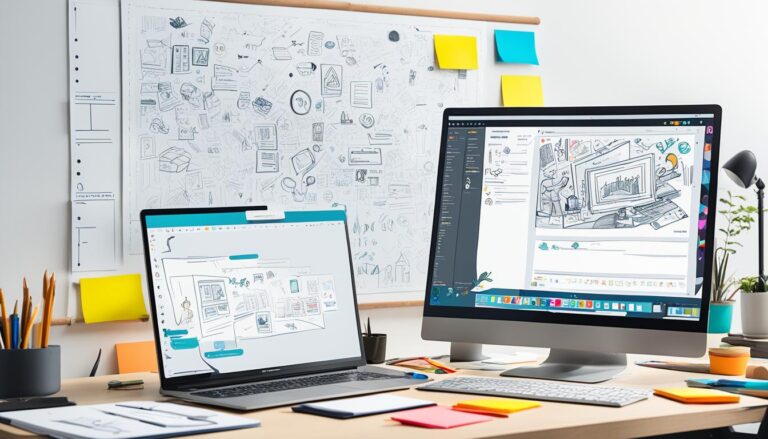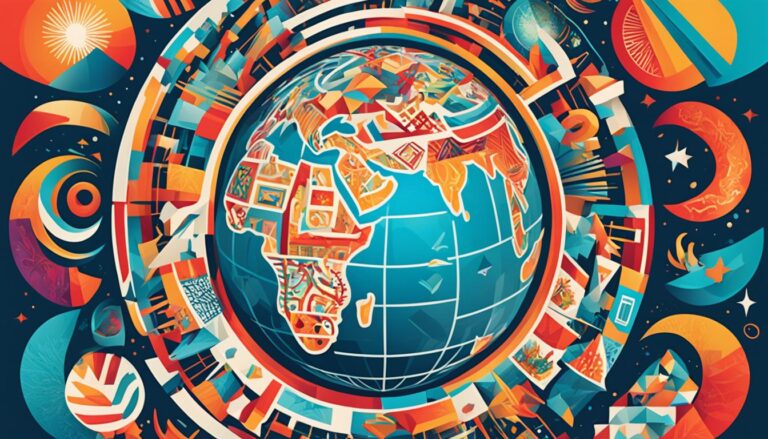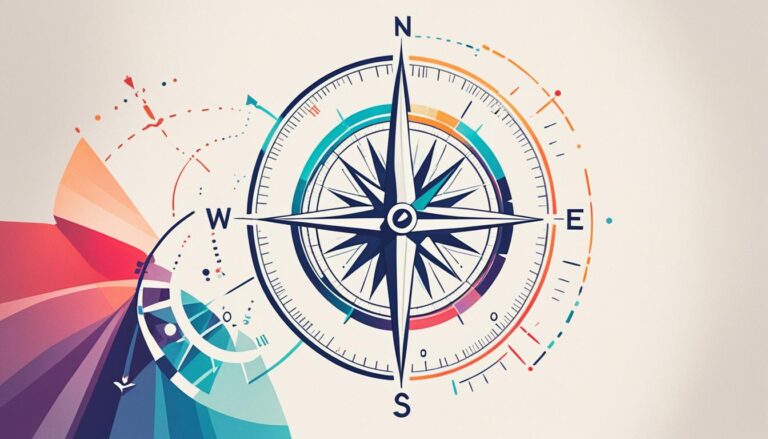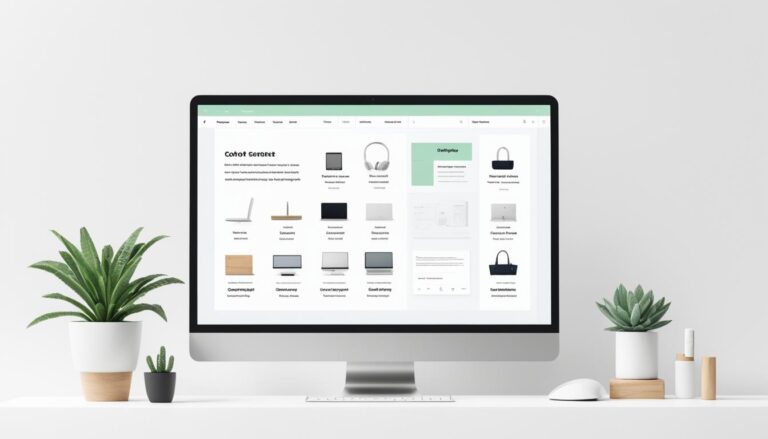Dispelling Myths: Not True About Graphic Design
Graphic design is a multifaceted field that is often misunderstood and surrounded by misconceptions. In this article, we will debunk some of the most common myths about graphic design and explore the true nature of this profession.
These myths include the belief that graphic design is solely about making things look pretty, that graphic designers just push buttons in Photoshop, and that graphic design is a low-skill freelance gig. We will also address the misconception that templates can replace graphic designers, that graphic design is a solo endeavor, and that graphic design is only about logos and posters. Lastly, we will discuss the myth that graphic design has a fixed and formulaic approach.
By dispelling these myths, we can gain a deeper understanding of the true nature of graphic design. It is not just about aesthetics and button-pushing in software, but a profession that requires creativity, expertise, and strategic thinking. Graphic designers play a vital role in effective communication, brand development, and shaping how we perceive information and the world around us.
Myth 1: “Graphic Design is Just About Making Things Look Pretty”
One of the most common myths about graphic design is that it is solely focused on aesthetics and making things visually appealing. However, graphic design goes beyond mere aesthetics and encompasses effective communication, conveying messages, and evoking emotions through visual elements. Skilled graphic designers understand the psychology of colors, typography, and layout in order to create designs that resonate with the target audience.
Visual elements play a crucial role in capturing the attention of the viewers and conveying the intended message. By strategically using colors, typography, images, and layout, graphic designers can effectively communicate ideas, evoke emotions, and shape perceptions. For example, the choice of color scheme can influence the mood or create a specific brand identity, while typography can communicate different tones or enhance readability.
Graphic design aesthetics are not only about making things visually appealing but about creating designs that forge a connection with the target audience. It involves understanding the target audience’s preferences, cultural nuances, and design trends to ensure the design resonates with them. Effective graphic design takes into account the target audience’s age group, interests, demographics, and psychographics to craft designs that are not only visually pleasing but also speak to them on a deeper level.
Let’s consider an example. A children’s book cover may use bright and playful illustrations, vibrant colors, and whimsical typography to attract young readers and reflect the book’s content. Conversely, a financial advisory firm may opt for more professional and subdued colors, clean typography, and sophisticated visuals to convey trust and expertise to their target audience.
Effective Communication Through Graphic Design
Graphic design serves as a form of visual communication that transcends language barriers and captures attention. It possesses the power to engage, inform, and persuade through visual storytelling. By skillfully combining elements such as images, illustrations, icons, and text, graphic designers create compositions that effectively communicate key messages.
“Graphic design can be seen as an art of communication. It has the ability to convey complex ideas and information in a visually engaging and understandable way.” – Sarah Johnson, Senior Graphic Designer
In addition to conveying messages, effective graphic design also considers readability and user experience. By optimizing the layout, hierarchy, and organization of information, designers ensure that viewers can easily comprehend and navigate through the visual content. This consideration extends across various mediums, from web design to print materials.
Graphic design is not just about making things look pretty. It is a powerful tool for effective communication, connecting with the target audience, and conveying messages in a visually captivating manner. Aesthetics play a vital role, but they are seamlessly united with the purpose of the design, ensuring that the final product effectively communicates the desired message to the intended audience.
The Role of Visual Elements in Graphic Design
| Visual Elements | Role |
|---|---|
| Colors | Influence emotions, evoke feelings, convey brand identity |
| Typography | Communicate tone, enhance readability, create hierarchy |
| Layout | Organize information, guide the viewer’s eye, ensure readability |
| Images/Illustrations | Evoke emotions, enhance storytelling, capture attention |
Myth 2: “Graphic Designers Just Push Buttons in Photoshop”
Another common misconception about graphic design is that it simply involves mindlessly pushing buttons in Photoshop without any thought or creativity. However, the reality is quite different. Graphic design is a profession that requires a deep understanding of design principles, user experience, and the client’s goals. It is a delicate balance of problem-solving, creativity, and expertise.
Graphic designers are not merely technicians; they are skilled problem solvers. Before even opening Photoshop or any other design software, they carefully analyze the project requirements and objectives. They consider various factors such as the target audience, brand identity, and messaging. This thoughtful approach allows them to make informed decisions and create designs that effectively communicate the desired message.
Designing a successful graphic requires expertise in utilizing various graphic design principles. From color theory and typography to composition and visual hierarchy, graphic designers understand how to create visually pleasing and impactful designs. They know how to manipulate these elements to convey emotions, capture attention, and guide the viewer’s eye.
“Graphic designers are not button pushers; they are problem solvers who use their creativity and expertise to bring concepts to life.”
While tools like Photoshop are used in the design process, they are just tools. It is the designer’s creative vision and expertise that breathe life into a concept. They carefully choose each element, whether it’s the color palette, the typography, or the composition, to create a cohesive and visually appealing design.
Graphic designers also possess a keen understanding of user experience. They know how to create designs that not only look great but also provide a seamless and intuitive user journey. They consider factors such as usability, accessibility, and interactivity to ensure that the design enhances the overall user experience.
In conclusion, the belief that graphic designers simply push buttons in Photoshop is a misconception that undermines the true nature of this profession. Graphic design requires a combination of problem-solving skills, creativity, and expertise in design principles. It is a profession that goes beyond just making things look pretty, and graphic designers play a vital role in solving visual communication challenges and creating impactful designs.
Myth 3: “Graphic Design is a Low-Skill Freelance Gig”
There is a misconception that graphic design is a low-skill freelance job that anyone with basic software knowledge can do. However, graphic design demands a blend of creativity, technical proficiency, and strategic thinking. It is about translating abstract ideas into tangible visuals that effectively communicate complex concepts.
Professional graphic designers invest years in honing their skills, staying updated with design trends, and mastering industry-standard software. They possess the expertise to create visually stunning designs that capture attention and convey the intended message. Without the right balance of creativity and technical proficiency, a design may fail to resonate with its target audience and miss its intended impact.
The Power of Creativity
Creativity is at the core of graphic design. It allows designers to think outside the box, explore innovative ideas, and bring a unique perspective to every project. A creative approach helps designers to develop visually appealing and memorable designs that stand out in a crowded marketplace.
The Importance of Technical Proficiency
Alongside creativity, technical proficiency is crucial in graphic design. Designers must be well-versed in industry-standard software such as Adobe Creative Suite (including Photoshop, Illustrator, and InDesign) to effectively execute their ideas. They possess the technical know-how to manipulate images, create vector graphics, and design layouts that meet professional standards.
Strategic Thinking in Graphic Design
Graphic designers are strategic thinkers, considering the broader goals and objectives of a project. They have an understanding of marketing principles and consumer behavior, allowing them to create designs that align with the client’s strategy and target audience. This strategic approach ensures the design effectively communicates the desired message and achieves the intended outcome.
Comparison of Skills in Graphic Design
| Skills | Creativity | Technical Proficiency | Strategic Thinking |
|---|---|---|---|
| Definition | The ability to generate unique and innovative ideas. | The proficiency in industry-standard software and technical design techniques. | The capacity to align design choices with the client’s goals and target audience. |
| Importance | Essential for creating visually appealing and memorable designs. | Enables the execution of design concepts and manipulation of visual elements. | Ensures the design effectively communicates the desired message and achieves objectives. |
| Role | Inspires fresh and innovative design solutions. | Provides the technical skills to bring design ideas to life. | Allows for considered design decisions rooted in strategy and marketing principles. |
This table highlights the importance of creativity, technical proficiency, and strategic thinking in graphic design. Each skill plays a vital role in producing exceptional designs that captivate audiences and deliver impactful messages.
Myth 4: “Templates Can Replace Graphic Designers”
With the rise of design templates, another myth has emerged – the idea that templates can replace the need for skilled graphic designers. While templates can be useful for generic purposes, they lack the customization, uniqueness, and personalized touch that a professional designer brings. A tailored design is essential for branding, marketing, and meaningful communication. Graphic designers understand the specific needs of businesses and create designs that align with their objectives.
Templates may seem convenient, but they often lack the depth and creativity that comes from working with a professional designer. Design templates offer pre-designed layouts and elements that can be easily filled in, but this approach rarely captures the essence of a brand or effectively communicates its values. When it comes to branding and marketing efforts, a cookie-cutter approach falls short.
“Design is not just about creating something visually appealing; it’s about capturing the essence of a brand, telling its story, and connecting with the target audience. Templates may be a starting point, but a professional designer brings the expertise to transform a concept into a unique and impactful design.” – Jane Smith, Professional Graphic Designer
Professional graphic designers have the skills and knowledge to create custom designs that resonate with the target audience, effectively communicate the desired message, and elevate the brand’s image. They understand the importance of visual hierarchy, strategic use of color and typography, and creating designs that evoke the intended emotions. Templates, on the other hand, offer limited customization options and often rely on generic elements that fail to make a lasting impression.
The Benefits of Working with a Professional Designer
- Uniqueness: Professional designers have the ability to create custom designs that are unique to each client, helping their brand stand out from the competition.
- Personalized Approach: Designers work closely with clients to understand their goals, target audience, and brand identity, ensuring the design reflects the client’s vision.
- Attention to Detail: From selecting the right colors to crafting typography that complements the message, professional designers pay attention to every detail of the design to create a cohesive and visually pleasing end result.
- Expertise and Creativity: Designers possess a deep understanding of design principles, trends, and industry-standard software, allowing them to bring innovative and cutting-edge designs to life.
- Branding and Consistency: A professional designer will ensure that the design aligns with the overall brand identity, maintaining consistency across all marketing materials and platforms.
In a world where first impressions matter, investing in the expertise of a professional graphic designer is crucial for businesses looking to make a lasting impact. While templates may offer convenience, they cannot replace the skills, creativity, and attention to detail that a professional designer brings to the table. By collaborating with a designer, businesses can ensure their design assets are customized, impactful, and aligned with their objectives.
Myth 5: “Graphic Design is a Solo Endeavor”
Graphic designers are often perceived as solitary artists working in isolation. However, modern graphic design projects are collaborative endeavors. Designers work closely with clients, marketing teams, copywriters, and other professionals to ensure that the design aligns with the broader strategy. Effective communication and teamwork are crucial for producing successful designs that meet business objectives.
Collaboration and teamwork in graphic design foster innovation, creativity, and the ability to deliver impactful designs that resonate with the target audience. By involving multiple perspectives and expertise, designers can tap into a collective pool of ideas, refine concepts, and achieve a more comprehensive visual solution. Effective communication is essential in understanding the client’s expectations, addressing feedback, and ensuring a seamless workflow.
“Collaboration is at the heart of successful graphic design projects. It brings together diverse skills, knowledge, and experiences to create designs that surpass expectations.”
By working collaboratively, graphic designers can leverage each other’s strengths and expertise, resulting in a more refined and polished design outcome. The input from various stakeholders helps in understanding the client’s vision, market trends, and the nuances of the project. Together, they can explore different design approaches, iterate on ideas, and ultimately create designs that not only meet but exceed expectations.
Moreover, collaboration goes beyond the design process itself. It extends to coordinating with various teams, such as copywriters, marketers, and developers, to ensure seamless integration and cohesion across different aspects of a project. This collaboration enables a holistic approach to design, where every element works together harmoniously to deliver a consistent and visually cohesive brand experience.
Benefits of Collaboration in Graphic Design:
- Promotes innovative thinking and problem-solving
- Enhances the quality and effectiveness of designs
- Fosters a diverse range of perspectives and ideas
- Maximizes efficiency by leveraging each team member’s strengths
- Allows for customization and personalization based on specific project requirements
| Key Elements of Effective Collaboration: | Benefits: |
|---|---|
| Open and transparent communication | – Ensures clarity and alignment with project goals – Facilitates efficient exchange of ideas and feedback – Minimizes misunderstandings and delays |
| Clear roles and responsibilities | – Enables efficient coordination and task allocation – Avoids duplication of effort and confusion |
| Respect for diverse opinions and expertise | – Encourages inclusivity and fosters a positive team dynamic – Stimulates creativity and innovation through collaboration |
| Regular checkpoints and feedback loops | – Tracks progress and identifies areas for improvement – Allows for timely adjustments to meet project objectives – Ensures continuous refinement and iteration of designs |
Myth 6: “Graphic Design is Only About Logos and Posters”
While logos and posters are recognizable outputs of graphic design, the scope of this field extends far beyond that. Graphic design encompasses a wide range of mediums, including web design, user interface (UI) design, packaging design, infographics, motion graphics, and more. Each of these areas requires specialized skills, and a versatile graphic designer can excel in multiple domains.
Graphic design plays a crucial role in web design, where designers create visually appealing and user-friendly websites that effectively communicate the brand message. User interface (UI) design focuses on designing interfaces for digital platforms, ensuring a seamless and intuitive user experience. Packaging design plays a vital role in product marketing, capturing the attention of consumers through visual elements and creating a memorable brand identity.
“Motion graphics brings designs to life, adding movement and interactivity to engage and captivate viewers. Infographics, on the other hand, present complex information in a visually appealing and easy-to-understand manner, making data more accessible and engaging.”
Graphic designers who have expertise in these various areas can apply their skills to create cohesive and impactful designs across multiple mediums, ensuring brand consistency and enhancing the overall visual experience.
Myth 7: “Graphic Design Has a Fixed and Formulaic Approach”
Design is a dynamic field that thrives on innovation and adaptation. Some believe that graphic design follows a fixed formula, but in reality, successful designs are born from a deep understanding of the target audience, the project’s objectives, and the willingness to think outside the box. Creative problem-solving is at the heart of graphic design, and designers constantly explore new approaches and techniques to create impactful and memorable designs.
Graphic design is not about following a rigid template or set of rules, but rather about pushing the boundaries of creativity and challenging conventional norms. It requires outside-the-box thinking and a willingness to take risks in order to deliver innovative and unique solutions.
By embracing outside-the-box thinking, graphic designers can break free from conventional design approaches and create something truly remarkable. They understand that every project is unique and requires a customized approach that addresses its specific challenges and goals.
Whether it’s experimenting with unconventional color palettes, exploring new design trends, or incorporating unexpected elements, graphic designers constantly seek ways to innovate and push the boundaries of their craft.
Embracing Innovation in Graphic Design
To showcase the importance of innovation in graphic design, let’s take a look at a comparison between a traditional approach and an innovative approach in a website redesign project:
| Traditional Approach | Innovative Approach |
|---|---|
| Follows established industry standards | Challenges industry norms and conventions |
| Relies on common design elements and layouts | Introduces unique and unexpected design elements |
| Prioritizes conformity and familiarity | Prioritizes differentiation and originality |
| Delivers a predictable and expected design | Delivers a fresh and memorable design |
As shown in the comparison above, embracing innovation in graphic design can lead to outstanding outcomes that captivate audiences and differentiate brands from their competitors. By thinking outside the box and adopting a creative problem-solving mindset, graphic designers can redefine the possibilities of design and make a lasting impact.
Conclusion
In conclusion, graphic design is not just about making things look pretty. It is a multifaceted profession that requires a combination of creativity, technical proficiency, and strategic thinking. By dispelling the myths surrounding graphic design, we gain a deeper understanding of its true nature.
Graphic designers play a vital role in effective communication and brand development. They go beyond aesthetics to convey messages, evoke emotions, and create designs that resonate with the target audience. Through their expertise, they shape how we perceive information, brands, and the world around us.
It is important to recognize the importance of graphic design and not underestimate the skills and value that graphic designers bring. They are not simply pushing buttons in Photoshop or using templates. They are skilled problem solvers, collaborating with clients and other professionals to create impactful designs across various mediums.
FAQ
What are some common misconceptions about graphic design?
There are several myths surrounding graphic design, including the beliefs that it is solely about making things look pretty, that graphic designers just push buttons in Photoshop, and that it is a low-skill freelance gig.
Is graphic design only focused on aesthetics?
No, graphic design goes beyond aesthetics and encompasses effective communication, conveying messages, and evoking emotions through visual elements. It involves understanding the psychology of colors, typography, and layout to resonate with the target audience.
Do graphic designers simply push buttons in Photoshop?
No, graphic design requires a deep understanding of design principles, user experience, and the client’s goals. Graphic designers are problem solvers who carefully choose elements to create cohesive and impactful designs.
Is graphic design a low-skill freelance job?
No, graphic design demands a blend of creativity, technical proficiency, and strategic thinking. It involves translating abstract ideas into tangible visuals that effectively communicate complex concepts.
Can templates replace the need for skilled graphic designers?
While templates can be useful for generic purposes, they lack the customization, uniqueness, and personalized touch that a professional designer brings. Tailored designs are essential for branding, marketing, and meaningful communication.
Is graphic design a solo endeavor?
No, modern graphic design projects are collaborative endeavors. Designers work closely with clients, marketing teams, copywriters, and other professionals to ensure that the design aligns with the broader strategy.
Is graphic design limited to logos and posters?
No, graphic design encompasses a wide range of mediums, including web design, user interface (UI) design, packaging design, infographics, motion graphics, and more. Graphic designers can excel in multiple domains.
Does graphic design have a fixed and formulaic approach?
No, successful designs are born from a deep understanding of the target audience, project objectives, and the willingness to think outside the box. Graphic design thrives on innovation, adaptation, and creative problem-solving.

